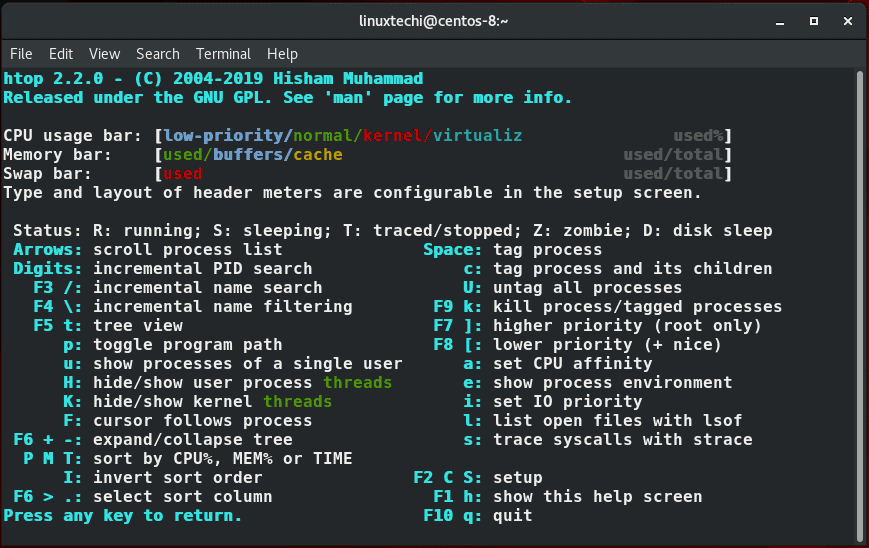

Instead of multiple bars, you might want to display only one bar for CPU average usage. On a multi core system, the list of individual CPU bar might be a distraction.

Htop by default displays a separate bar for every CPU (or core) on your system. Use arrow keys, page up, page down key to scoll the processes.įooter displays htop menu commands. Low-priority in blue, normal in green, kernel in red.īody displays the list of processes sorted by %CPU usage. The bar itself will show different colors. CPU Usage: Displays the %used in text at the end of the bar.You can change any of these from the htop setup menu. Header displays the following three bars, and few vital system information. Htop output consists of three sections 1) header 2) body and 3) footer. This will install htop under /usr/local/bin. Pick the command that works with your system’s package manager.If you prefer to install htop from souce, download the source code, and do the following. Once your terminal is open, you can go ahead and install Nethogs. Just press CTRL + ALT + T and your default terminal emulator should open right up. If that’s something you’re interested in doing, a search engine will help you get there. It’s possible to use Nethogs without sudo, but we won’t be covering that here. We’ll be using ‘sudo’ for all of these commands. (There’s a future article about top and htop, when I get to it.) But, Nethogs is like a system monitor, except it’s a network monitor with some visual similarity with top. I suppose that’s mostly useful to those who know what ‘ top‘ is. Nethogs – Net top tool grouping bandwidth per process Feel free to leave a comment telling us how you intend to use Nethogs.Īs stated, we’ll be using Nethogs. There are all sorts of reasons to monitor your network usage at this level. You might also be looking for rogue applications/malware that’s using up some of your bandwidth. Not everyone has unlimited bandwidth after all. Why would you want to monitor this? Well, you may want to know which applications are eating up most of your bandwidth. It’s actually easier than one might think and we’ll even show you how to install Nethogs on a variety of distros. Today’s article is going to tell you how to use Nethogs to monitor network usage on a per-application basis.


 0 kommentar(er)
0 kommentar(er)
